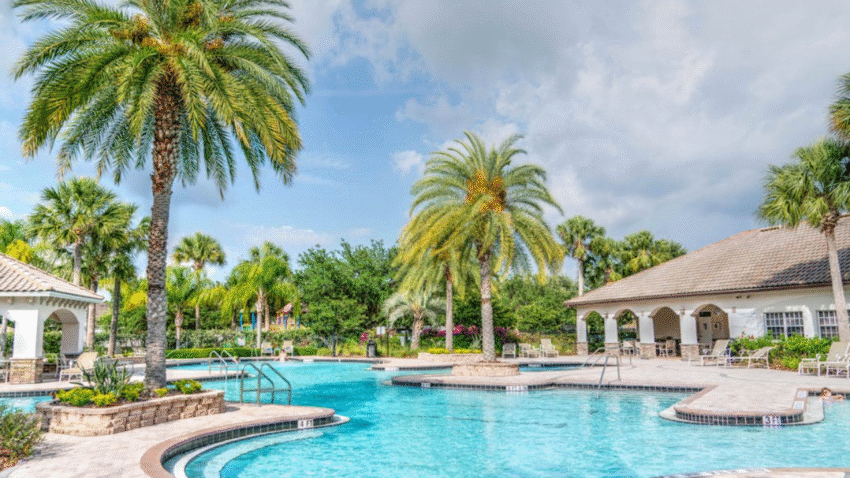Introduction
Is your pool pump running but no water is flowing? It likely needs priming. In this complete guide on how to prime a pool pump, you’ll learn how to restore water flow and avoid damage to your system. Whether you’re opening your pool for the season or restarting after maintenance, priming is an essential skill every pool owner should master.
Why Priming a Pool Pump Matters
Priming a pool pump means filling it with water so it can begin pulling water through the plumbing system. Unlike self-priming pumps in other settings, many pool pumps require manual priming to function correctly. If a pump runs dry:
- It can overheat and burn out the motor
- It won’t circulate water to the filter or return lines
- It may cause air to build up, reducing suction and efficiency
Proper priming ensures water flow, protects the pump from damage, and keeps your pool clean and safe.
Step-by-Step Guide to Priming a Pool Pump
Step 1: Turn Off the Pump
Before doing anything, turn off power to the pool pump using the main switch or circuit breaker. Running a pump without water can damage the motor within minutes.
Pool Owner Tip: If your pump has run dry, allow it to cool for 15–30 minutes before attempting to restart.
Step 2: Set the Multiport Valve to “Recirculate” (Optional)
If your system has a multiport valve, set it to “Recirculate” during priming. This bypasses the filter and reduces resistance, allowing water to flow more easily through the system.
Step 3: Check Water Level in the Pool
Make sure your pool water level is at least halfway up the skimmer opening. If the water is too low, air will enter the suction lines and prevent priming.
Top off the water with a hose if necessary before continuing.
Step 4: Open Air Relief Valve (If Available)
If your pool filter has an air relief valve, open it to release trapped air. This helps water flow smoothly through the system once the pump is started.
Step 5: Open All Suction and Return Valves
Ensure all skimmer and main drain valves are fully open to allow water to enter the pump. Closed valves will prevent proper priming and may cause pressure build-up.
Caution: Double-check that the return lines (to the pool jets) are open to allow proper circulation once the pump is running.
Step 6: Remove the Pump Lid and Clean the Strainer Basket
Twist off the pump lid and remove any debris from the pump strainer basket. A clogged basket can block water flow and reduce suction.
Rinse the basket with a hose and place it back securely in the pump housing.
Step 7: Fill the Pump Housing with Water
Using a garden hose or a large bucket, fill the pump housing completely with water. This forces air out of the system and creates the initial suction needed for the pump to work.
Fill it up until the water reaches the top of the pump basket or spills slightly over.
Pool Owner Tip: If water immediately drains out of the pump housing, there may be a suction-side leak that needs sealing.
Step 8: Replace the Pump Lid Securely
Make sure the pump lid O-ring is clean and properly seated. Then, replace the lid tightly to form an airtight seal. An improper seal can introduce air and cause the pump to lose prime.
Step 9: Turn the Pump On
Restore power at the circuit breaker or switch. The pump should start pulling water within 30 seconds to 2 minutes.
You’ll know the pump is primed when:
- Water flows steadily into the pump basket
- The pump basket fills completely with water
- You see water returning to the pool through the jets
If the pump still isn’t moving water after 2–3 minutes, turn it off and repeat the process.
Step 10: Monitor for Air and Pressure Changes
Keep an eye on the air relief valve (if open) and pressure gauge on your filter. Once water starts flowing:
- Close the air relief valve when water begins to spray out
- Normal operating pressure should return (typically 10–20 psi depending on your system)
If the pressure stays at zero or you see bubbles in the pump basket, the pump may still be partially unprimed.
Common Mistakes to Avoid
- Forgetting to Fill the Pump Housing
Dry-starting a pump without water can overheat and destroy the motor. - Loose Pump Lid or O-Ring
Even a small air leak can prevent the pump from holding a prime. - Closed Valves
If your suction or return lines are closed, no water will flow. - Low Pool Water Level
Air entering through the skimmer will interrupt the suction process. - Skipping Air Relief
Trapped air can slow or prevent priming altogether.
Extra Tips & Pool Hacks
- Lubricate the Lid O-Ring: Use pool-grade silicone to keep the seal airtight and prevent dry rot.
- Use a Check Valve: Installing a check valve on the suction line helps prevent water from draining back when the pump is off.
- Prime Early in the Day: Cooler temperatures help reduce evaporation and suction issues.
- Use a Shop Vacuum (Advanced Tip): A wet/dry vac can help pull water through the suction line for hard-to-prime systems.
Need help installing your pump? Check out our guide on [how to install a pool pump] for a full walkthrough.
Conclusion
Learning how to prime a pool pump is essential for every pool owner. It’s a simple but crucial task that keeps your filtration system working properly and prevents costly damage. By following these steps and monitoring your water flow, you’ll be able to keep your pool pump running efficiently and enjoy crystal-clear water all season long.
✅ Bookmark this guide so you’re always prepared to prime your pump the right way!
